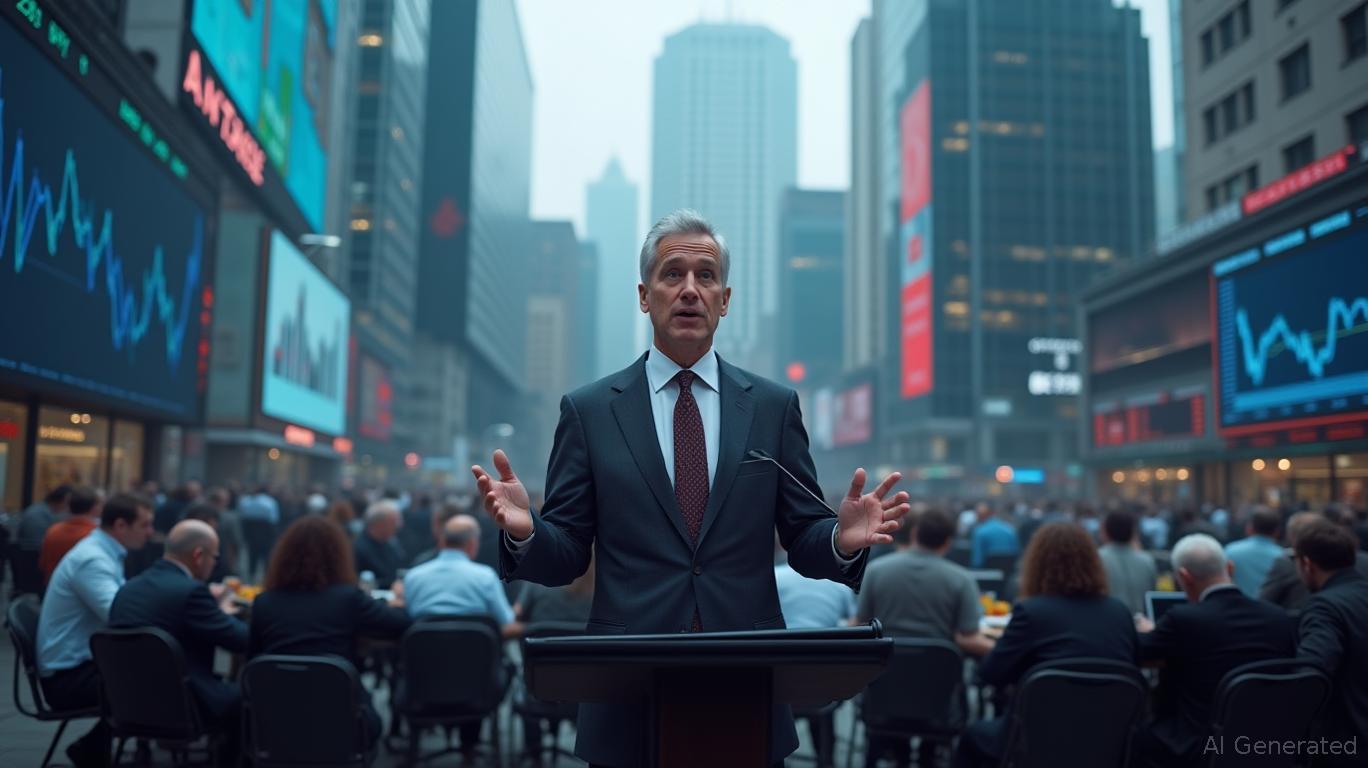Navigating Economic Cycles: Understanding Construction Spending Trends and Their Market Implications
Thursday, Jan 2, 2025 8:10 pm ET
Introduction
The cycles of the economy impact every sector, but one area that offers critical insights into broader market trends is construction spending. This financial concept is pivotal for investors aiming to predict market movements and make informed investment decisions. Understanding construction spending trends can reveal much about economic health, consumer confidence, and future market opportunities, making it highly relevant to investors.
Core Concept Explanation
Construction spending refers to the total amount of money spent on construction activities, including residential, commercial, and public projects. This metric serves as an economic indicator, reflecting the demand for construction services, the availability of capital, and the level of economic confidence. When construction spending is high, it often signals economic growth, suggesting increased business investments and consumer activity. Conversely, when spending declines, it may indicate economic slowdown or contraction.
Application and Strategies
Investors use construction spending data to gauge economic momentum and adjust their investment strategies accordingly. For instance, rising construction spending can signal opportunities in sectors related to real estate, construction materials, and financial institutions providing construction loans. Investors might consider increasing their holdings in these areas during periods of growth.
Conversely, declining construction spending might prompt investors to adopt a defensive strategy, reallocating assets into more stable sectors like utilities or consumer staples, which are less sensitive to economic fluctuations. By closely monitoring trends in construction spending, investors can make proactive decisions to optimize their portfolios.
Case Study Analysis
Consider the 2008 financial crisis, a period dramatically impacted by shifts in construction spending. Leading up to the crisis, there was a significant increase in residential construction, fueled by easy credit and speculative investments. When the housing bubble burst, construction spending plummeted, contributing to a sharp economic downturn.
Conversely, the recovery phase post-2008 illustrated how construction spending can signal economic resilience. As government stimulus packages were introduced, public infrastructure projects surged, and construction spending gradually increased, indicating a recovery trend. Investors who recognized these signals early had the opportunity to invest in construction-related stocks and sectors, benefiting from the eventual economic rebound.
Risks and Considerations
While construction spending is a valuable economic indicator, relying solely on this metric can be risky. Economic conditions are influenced by a myriad of factors, and other indicators such as employment rates, consumer spending, and industrial production should also be considered to gain a comprehensive understanding.
Investors should be cautious of overreacting to short-term fluctuations in construction spending. It's crucial to analyze trends over a more extended period and within the context of broader economic conditions. Diversifying investments and employing risk management strategies can help mitigate potential downsides associated with abrupt market changes.
Conclusion
In conclusion, construction spending trends offer significant insights into the health and direction of the economy, making them a valuable tool for investors. By understanding and applying this concept, investors can better navigate economic cycles, capitalize on growth opportunities, and manage risks effectively. Keeping an eye on construction spending, alongside other economic indicators, allows investors to make more informed and strategic investment decisions, enhancing their potential for success in the stock market.
The cycles of the economy impact every sector, but one area that offers critical insights into broader market trends is construction spending. This financial concept is pivotal for investors aiming to predict market movements and make informed investment decisions. Understanding construction spending trends can reveal much about economic health, consumer confidence, and future market opportunities, making it highly relevant to investors.
Core Concept Explanation
Construction spending refers to the total amount of money spent on construction activities, including residential, commercial, and public projects. This metric serves as an economic indicator, reflecting the demand for construction services, the availability of capital, and the level of economic confidence. When construction spending is high, it often signals economic growth, suggesting increased business investments and consumer activity. Conversely, when spending declines, it may indicate economic slowdown or contraction.
Application and Strategies
Investors use construction spending data to gauge economic momentum and adjust their investment strategies accordingly. For instance, rising construction spending can signal opportunities in sectors related to real estate, construction materials, and financial institutions providing construction loans. Investors might consider increasing their holdings in these areas during periods of growth.
Conversely, declining construction spending might prompt investors to adopt a defensive strategy, reallocating assets into more stable sectors like utilities or consumer staples, which are less sensitive to economic fluctuations. By closely monitoring trends in construction spending, investors can make proactive decisions to optimize their portfolios.
Case Study Analysis
Consider the 2008 financial crisis, a period dramatically impacted by shifts in construction spending. Leading up to the crisis, there was a significant increase in residential construction, fueled by easy credit and speculative investments. When the housing bubble burst, construction spending plummeted, contributing to a sharp economic downturn.
Conversely, the recovery phase post-2008 illustrated how construction spending can signal economic resilience. As government stimulus packages were introduced, public infrastructure projects surged, and construction spending gradually increased, indicating a recovery trend. Investors who recognized these signals early had the opportunity to invest in construction-related stocks and sectors, benefiting from the eventual economic rebound.
Risks and Considerations
While construction spending is a valuable economic indicator, relying solely on this metric can be risky. Economic conditions are influenced by a myriad of factors, and other indicators such as employment rates, consumer spending, and industrial production should also be considered to gain a comprehensive understanding.
Investors should be cautious of overreacting to short-term fluctuations in construction spending. It's crucial to analyze trends over a more extended period and within the context of broader economic conditions. Diversifying investments and employing risk management strategies can help mitigate potential downsides associated with abrupt market changes.
Conclusion
In conclusion, construction spending trends offer significant insights into the health and direction of the economy, making them a valuable tool for investors. By understanding and applying this concept, investors can better navigate economic cycles, capitalize on growth opportunities, and manage risks effectively. Keeping an eye on construction spending, alongside other economic indicators, allows investors to make more informed and strategic investment decisions, enhancing their potential for success in the stock market.


_b905d9341749265671656.jpg)








